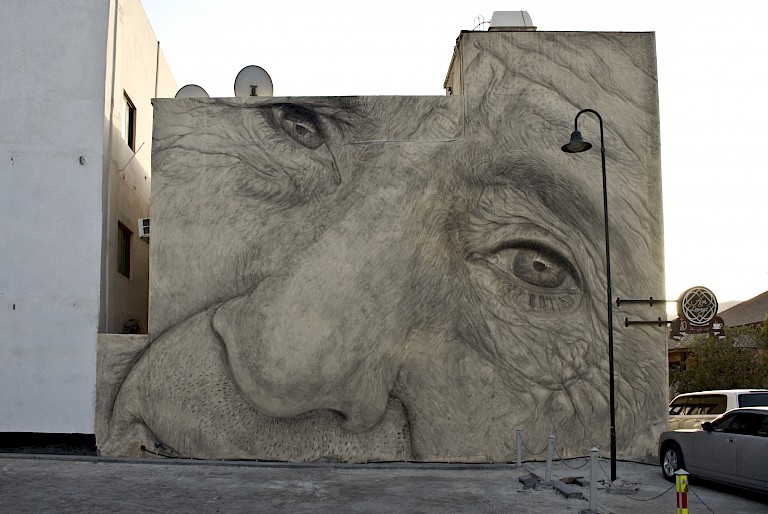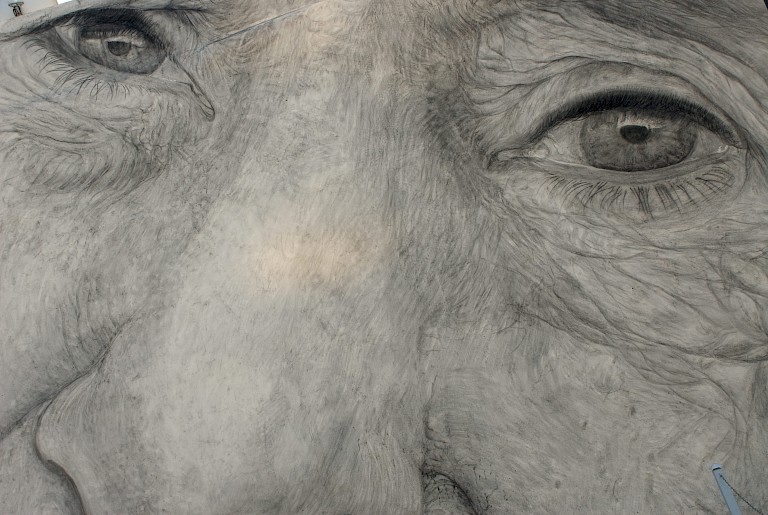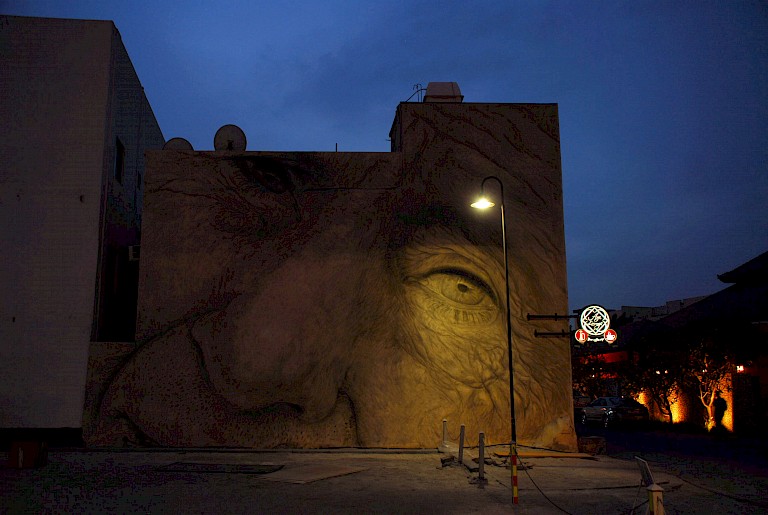



Sited in Bahrain’s largest city, Manama, the mural evoked the region’s past through the portrait of the fisherman, a symbol of the rapid erosion of tradition and the past by Bahrain’s self-transformation through oil wealth into a financial hub. Bahrain’s fishing villages are dying out, as the landscape gives way to skyscrapers and advertisements carrying images of the King and the political elite, together with those of commercial products. According to the artist, ‘in Bahrain the only large scale images of heroic proportions are those of the king and others in power.’ By inserting the image of a relatively anonymous person into the public sphere—a character belonging more to Bahrain’s past than to its future—the artist did in a sense help to reclaim public space, particularly for the memory of the marginalized, the nobodies in Bahrain’s post-oil economy. Considered in the context of Bahrain’s participation in the Arab Spring, essentially a series of ongoing protests, violent and non-violent, by ‘the people’ against political rulers in the Middle East, the portrait may well be seen as a laudable intervention in the city’s economy of signs, so many of which constitute expressions of political (monarchical) power. This is one of the points of excellence of the project.
Another commendable aspect of the project, and indeed, of the artist’s street art practice, is the use of materials that do not impact negatively on the environment. Thus, all the Identity works, including Yousif, fade and ultimately disappear over time, as a result of degradation/erosion by wind and water. This aspect of the work may be contrasted to graffiti executed in typical spray paints, which are not only toxic, but also relatively permanent. In terms of placemaking, Yousif made a part of Manama’s public sphere more habitable, at least on an existential level, by depriving the site of political and commercial imagery and associated interpellative forces, providing in their stead the face of an unknown man, an ‘everyman,’ staring as it were, from Bahrain’s receding past. In this way, Yousif also provoked questions about the position of everyday people in Bahrain’s future.
All copyright belongs to Shanghai Academy of Fine Arts, Shanghai University.



